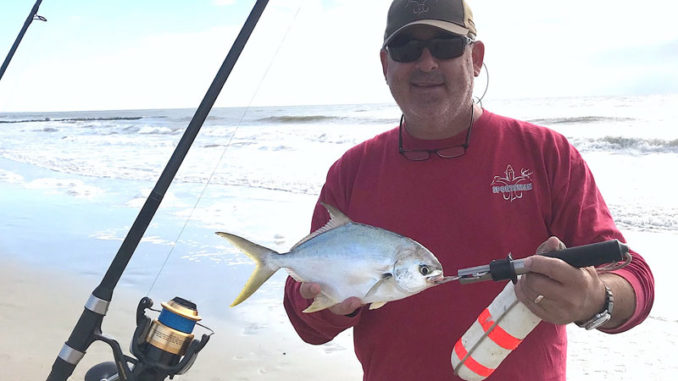
Beaches are less crowded this month, but surf is still full of fish
Within a week of Labor Day, most beaches in the Carolinas get a lot less crowded. Kids are back at school, family vacations are over, dove season is in. Even deer season has begun in some areas, and it’s about to begin in others. So September is a great time for surf fishing.
Another change that is less apparent to anglers is that the water is already starting to cool. They may or may not notice a slight change in the air temperature, but the fish feel it in the water. That slight temperature change shifts their feeding habits into high gear.
This month, surf anglers can catch numerous species. Tossing a shrimp out with enough weight to keep it anchored, then retreating to a beach chair to eat a sandwich while watching for a bite is certainly a good option. But anglers can also walk the beaches with a Got-Cha plug tied on, casting long distances to schooling Spanish mackerel.
Even more adventurous anglers can paddle a kayak out with half of a stingray on a big hook, drop it beyond the breakers, then paddle back to shore where their rod is waiting in a sturdy rod holder for a big shark to pick a fight. Check local laws, as a few beaches have outlawed shark fishing.
Surf cornucopia
Anglers fishing in the surf this month can expect to catch anything from redfish, Spanish mackerel, croaker, speckled trout, whiting, black drum, bluefish and even king mackerel in some areas. Pompano and flounder are two of the hottest-biting surf species and also some of the easiest fish to catch from the surf.
Most anglers targeting flounder will use a Carolina rig with a 1-ounce egg sinker above a barrel swivel. They’ll tie a leader of about 18 inches to that swivel and finish it off with a 3/0 hook. Mud minnows are always good bets as bait for flounder, but Gulp lures or other artificial soft plastics like grubs also work well. White is usually a good color.
Anglers fishing a beach with groins have a lot of success with flounder by slowly reeling their lure or bait parallel to the groin. Keeping the bait as tight to the wall as possible without it hanging up is usually productive, but anglers shouldn’t ignore the areas as much as 20 feet away from the groin.
Another strategy some surf fishermen like is wading out and casting parallel to the shore instead of out toward the open ocean. This can be especially effective for anglers who scout out the beach at low tide when all the deeper pockets and humps are exposed. As the tide comes in, anglers can set up to the right or left of those low and high points, then cast and slowly work their lures or bait parallel to the beach and through those points, which flounder love to gather in and around.
Pompano prizes
Pompano are one of the biggest draws for surf anglers this month. These fish show up during the summer and really hit their peak in September. They are hard fighters and make a nice meal in the evening after a day of fishing. And for anglers who will overlook the urge to cast as far as possible, pompano are probably the easiest fish to catch this month.
A basic two-hook surf rig is a good choice. The weight should be heavy enough to keep the rig in place once it’s on the bottom. Almost any small pieces of cut bait will work, but many anglers opt for artificial baits like Fishbites, which are made from natural fish parts attached to a weave of material that makes them tough for fish to pull apart. These baits gradually dissolve, dispersing a scent trail that attracts fish. Anglers like them because they can stay in the water a long time, as opposed to cut shrimp, which get pulled off the hook quickly by bait thieves.
Pompano really like these baits, especially when cast right into the frothy surf close to shore. No need to cast beyond the breakers for these fish. They often bite when the bait is just a few feet away from the rod. Making a short cast, then setting the rod in a rod holder is a good move. And anglers shouldn’t check their bait with every nibble. Pompano often pick at the bait numerous times before finally taking a full bite. When that happens, you’ll have no doubt it’s on the line.
Click here to read about “reverse surf fishing” from a Carolina fishing expert.

